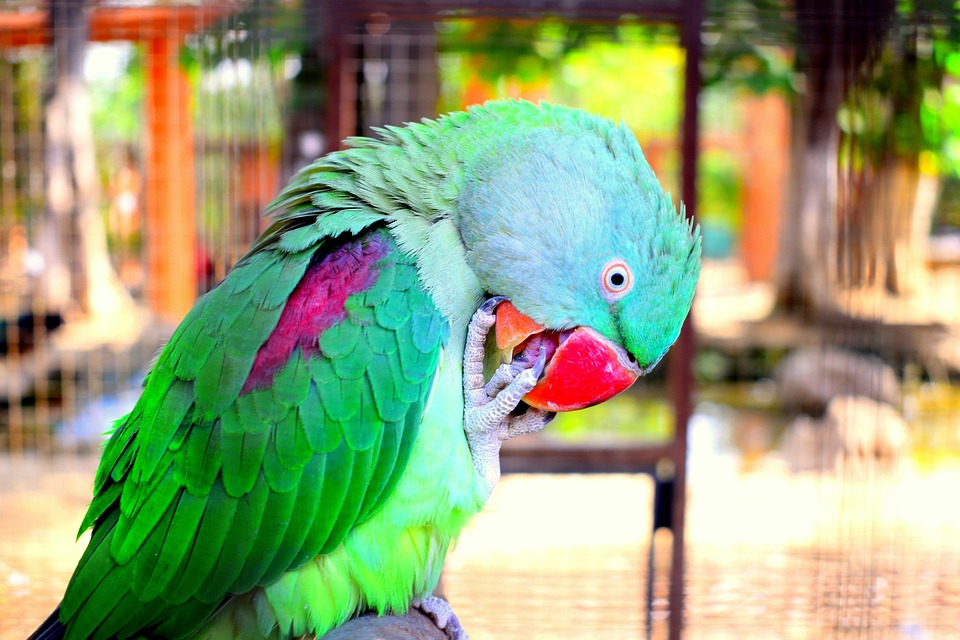Parrots are known for their intelligence and ability to learn a wide range of behaviors. One fun and practical skill you can teach your parrot is to “play dead” on cue. This can be achieved through positive reinforcement and understanding of parrot behavior. In this article, we will guide you through the step-by-step process of training your parrot to “play dead,” along with important tips and FAQs to ensure successful training.
Before starting the training process, it is important to understand some fundamental aspects of parrot behavior. Parrots engage in various natural behaviors such as foraging, playing, grooming, and vocalizing. These behaviors serve as the foundation for training. Parrots respond best to positive reinforcement techniques, such as rewards, praise, and treats. Punishments or negative reinforcement can be counterproductive and damage the trust between you and your parrot. Consistency and patience are key in parrot training. Each parrot learns at its own pace, so it is important to be patient and adapt the training plan to suit your parrot’s individual needs.
Now let’s dive into the step-by-step guide to training your parrot to “play dead” on cue:
1. Establish Trust: Building a strong bond with your parrot is crucial. Spend quality time together, engage in positive interactions, and ensure your parrot feels safe and secure in its environment.
2. Choose a Cue: Select a specific word or action that will serve as the cue for your parrot to “play dead.” This could be a word like “sleep” or a hand gesture.
3. Target Training: Begin by training your parrot to touch a target with its beak, such as a small stick or your finger. This step helps establish a foundation for further training.
4. Luring Technique: Hold a treat near your parrot’s beak and gradually move it towards its back, prompting your parrot to lie down on its side. Repeat this motion while using the chosen cue word or action.
5. Reward and Repeat: Once your parrot successfully lies down, reward it immediately with a treat and verbal praise. Repeat the process, gradually reducing the need for luring until your parrot responds to the cue without assistance.
6. Add a Visual Cue: Introduce a visual cue, such as a hand signal or a specific gesture, alongside the verbal cue. This helps your parrot associate the behavior with the cues more effectively.
7. Generalize the Behavior: Practice the “play dead” behavior in various locations and situations to help your parrot understand that the cue applies in different contexts.
8. Reinforce and Maintain: Continue reinforcing the behavior with treats and praise intermittently to ensure your parrot doesn’t lose the skill over time.
Now, let’s address some common concerns and provide expert advice:
1. How long does it typically take to train a parrot to “play dead”?
The training duration varies depending on your parrot’s individual personality and prior training experience. It can take anywhere from a few days to several weeks or even months. Patience and consistency are key.
2. What if my parrot doesn’t respond to the training?
If your parrot doesn’t show progress, reassess your training approach. Ensure the training sessions are short, fun, and rewarding. Seek guidance from an avian behaviorist or an experienced parrot trainer if needed.
3. Are there any risks involved with teaching a parrot to “play dead”?
When done correctly, teaching a parrot to “play dead” poses no physical or psychological risks. However, always prioritize your parrot’s well-being and never force it into a position that may cause discomfort or stress.
4. Can older parrots learn this behavior?
Absolutely! Parrots of all ages can learn new behaviors if given proper training and motivation. Older parrots may require more patience and adaptability in the training process.
Remember, training should always be a positive and enjoyable experience for both you and your parrot. Celebrate small victories, stay consistent, and foster a strong bond with your feathered friend. With time and dedication, your parrot will master the “play dead” behavior, showcasing their intelligence and your effective training techniques.









